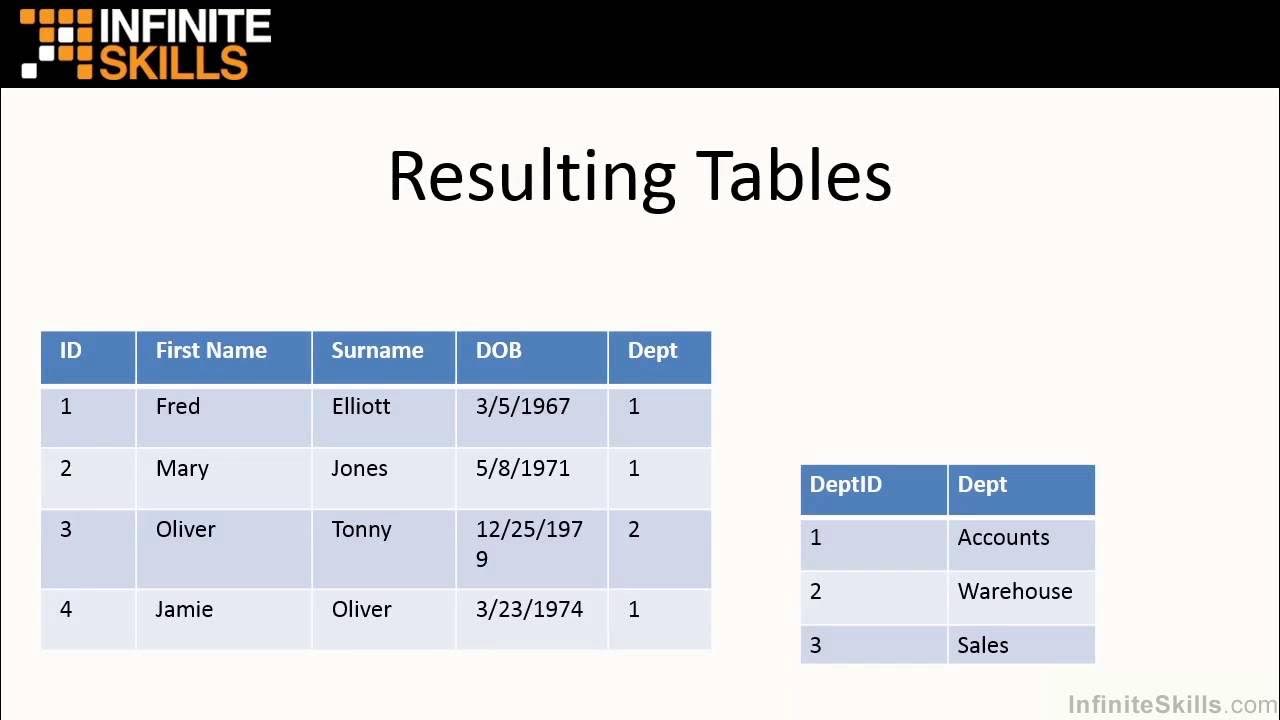Relational vs. Non-Relational Databases
Summary
TLDRThis script contrasts relational and non-relational databases, explaining the structured approach of relational databases using tables and relationships, and the flexibility of non-relational databases with their various types like key-value, column store, graph, and document store. It highlights the benefits of relational databases in ensuring data consistency, security, and ease of backup, while non-relational databases offer scalability, flexibility, and cost-effectiveness, catering to different use cases and client needs.
Takeaways
- 🗃️ Relational databases are structured and store data in interconnected tables, creating a relational model that ensures data consistency and security.
- 🔑 Primary keys in relational databases uniquely identify each record, while foreign keys link related data across different tables.
- 🔒 Relational databases offer benefits such as data consistency, security through encryption and access control, and ease of backup and recovery.
- 📊 Non-relational databases provide a flexible alternative to relational databases, with different types like key-value, column store, graph, and document store databases.
- 🔄 Non-relational databases excel in scalability, allowing horizontal scaling without the need for additional resources, and offer cost-effective storage solutions.
- 🛠️ The choice between relational and non-relational databases depends on the specific needs of the application, such as traditional workloads versus new applications requiring flexibility.
- 📈 Relational databases are suitable for structured data storage with clear relationships, like in point of sale systems or record tracking.
- 🌐 Non-relational databases are advantageous for handling large volumes of unstructured or semi-structured data, offering flexibility in data storage and retrieval.
- 🔑 In relational databases, each table focuses on a single entity, ensuring that the information is organized and easily accessible.
- 🔍 Non-relational databases offer various storage options that can be optimized for specific use cases, such as performance optimization in column stores or the graphical representation of connections in graph databases.
- 💻 Both relational and non-relational databases have their place in modern data management, allowing clients to choose the best fit for their data storage and operationalization needs.
Q & A
What are the two main types of databases discussed in the script?
-The script discusses relational databases and non-relational databases.
How is data structured in a relational database?
-In a relational database, data is structured in tables that are connected to each other, forming relationships.
What is the purpose of a primary key in a relational database?
-A primary key in a relational database uniquely identifies each record within a table.
Can you explain the concept of a foreign key in the context of relational databases?
-A foreign key is a field in a table that refers to the primary key of another table, establishing a link between the two tables.
What are the benefits of using a relational database?
-The benefits of using a relational database include data consistency, ease of management, enhanced security, and ease of backup and recovery.
What are the different types of non-relational databases mentioned in the script?
-The script mentions key-value databases, column store databases, graph databases, and document store databases as types of non-relational databases.
Why might a customer choose a non-relational database over a relational one?
-Customers might choose a non-relational database for its added flexibility, high scalability, and cost effectiveness.
How does a key-value database store data?
-A key-value database stores data as pairs of keys and values, where each key is unique and associated with a specific value.
What is a document store database and how is it different from a relational database?
-A document store database stores data in the form of documents within collections. Unlike relational databases, it does not require a fixed schema and can store varied data types.
What are some use cases for relational databases?
-Relational databases are suitable for traditional workloads such as point of sale systems and tracking large amounts of structured records.
What are some scenarios where non-relational databases might be preferred?
-Non-relational databases might be preferred when developing new applications that require added flexibility and can benefit from horizontal scaling.
Outlines

Esta sección está disponible solo para usuarios con suscripción. Por favor, mejora tu plan para acceder a esta parte.
Mejorar ahoraMindmap

Esta sección está disponible solo para usuarios con suscripción. Por favor, mejora tu plan para acceder a esta parte.
Mejorar ahoraKeywords

Esta sección está disponible solo para usuarios con suscripción. Por favor, mejora tu plan para acceder a esta parte.
Mejorar ahoraHighlights

Esta sección está disponible solo para usuarios con suscripción. Por favor, mejora tu plan para acceder a esta parte.
Mejorar ahoraTranscripts

Esta sección está disponible solo para usuarios con suscripción. Por favor, mejora tu plan para acceder a esta parte.
Mejorar ahoraVer Más Videos Relacionados

Learn What is Database | Types of Database | DBMS

Database Roadmap 2024 | الدليل الشامل لقواعد البيانات

SQL #2 - What is SQL [By Mosh Hamedani]

SQL Tutorial | Relational Databases and Key Terms Explained

Types of Databases: Relational vs. Columnar vs. Document vs. Graph vs. Vector vs. Key-value & more

Les Bases de Données (1/2) - Les Bases de données Relationnelles
5.0 / 5 (0 votes)
